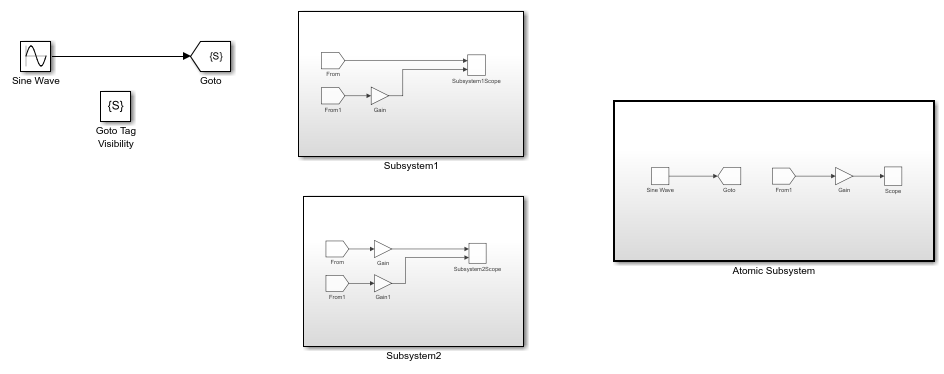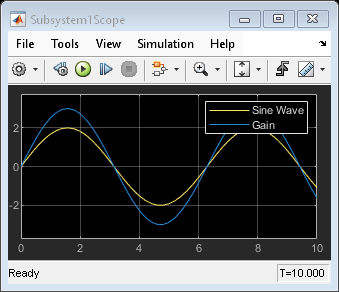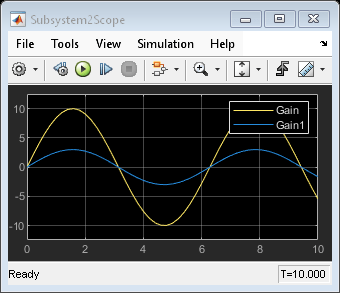Goto
将模块输入传递给 From 模块
库:
Simulink /
Signal Routing
HDL Coder /
Signal Routing
描述
Goto 模块将其输入传递给其对应的 From 模块。输入可以是任何数据类型的实数值或复数值信号或向量。From 和 Goto 模块允许您将信号从一个模块传递给另一个模块,而无需实际连接它们。
一个 Goto 模块可将其输入信号传递到多个 From 模块,尽管一个 From 模块只能接收来自一个 Goto 模块的信号。Goto 模块的输入传递到与它关联的 From 模块,就像两个模块进行了物理连接一样。
例如,此模型使用 Goto 模块和 From 模块。

等效模型将 Sine Wave 模块信号直接传递给 Gain 模块。

Goto 模块和 From 模块通过使用 Goto 标记进行匹配。
标记可见性参数确定 From 模块可以访问信号的位置。
Goto 模块支持信号标签传播。有关详细信息,请参阅信号标签传播。
您可以通过用多组相连的 Goto 和 From 模块替换冗长的信号线来简化模型图。但是,当您要跟踪信号路径时,查看信号线会很有用。您可以将信号线和虚拟总线转换为 Goto 和 From 模块集,并且可以将 Goto 和 From 模块集转换为信号线。有关详细信息,请参阅将信号线转换为 Goto 和 From 模块,反之亦然。
示例
扩展示例
端口
输入
参数
模块特性
数据类型 |
|
直接馈通 |
|
多维信号 |
|
可变大小信号 |
|
过零检测 |
|






